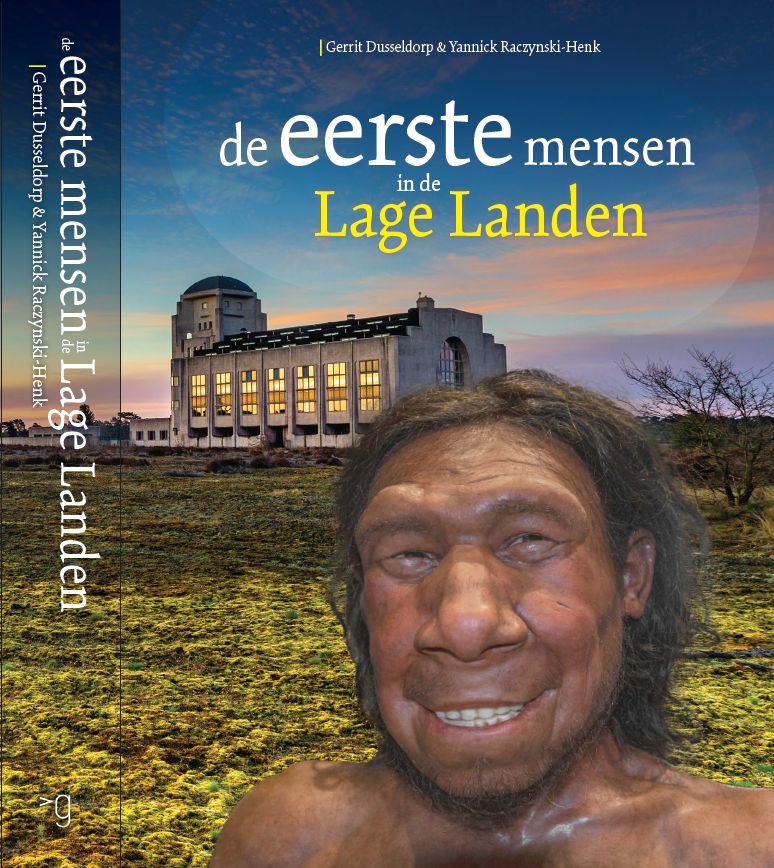
They came, they saw, they left: on the first humans in the Low Countries
Over hundreds of thousands of years, our region witnessed the comings and goings of various types of hominin. This depended on the temperature as ice ages alternated with warmer periods. In ‘De eerste mensen in de Lage Landen’ (‘The First Humans in the Low Countries’) Leiden archaeologists Yannick Raczynski-Henk and Gerrit Dusseldorp describe the presence of humans in the Netherlands and Belgium from around 800,000 to 11,000 years ago. The book has just been released.
Archaeology is a matter of zooming out. The alternating ice ages and warmer periods lasted tens to hundreds of thousands of years and developments were achingly slow. Time and again new finds – and in contrast, this development is fast – shed new light on the long history of humans. And they lead to new insights: in archaeology much is true until we realise it isn’t.
Neanderthal DNA
Thirty years since Wil Roebroeks’ book De oermens in Nederland (Primeval Humans in the Netherlands), De eerste mensen in de Lage Landen is the state of the art. Unlike then, we now know that we in Europe have around 2 per cent Neanderthal DNA. We also know that there is no clear line running from apes to humans but instead all sorts of branches and different species of hominin. And we know that not only humans but also Capuchin apes made stone tools and that Neanderthals made jewellery.
Another thing that is certain is that modern humans have the same lineage as chimpanzees, orangutans and gorillas. With their well-developed prefrontal cortex and temporal lobes, humans are the only remaining hominins: the others all disappeared over time. But before that happened, groups of hominins migrated across the globe, attracted or repelled by the ever-changing climate.
‘That hominins roamed our region 800,000 years ago is an assumption, given the tools and footprints found in the East of England,’ says Raczynski-Henk. ‘At that time England was still linked to what is now our country, so it can’t have been otherwise than that they were here: the beginning of a human presence.’
Into the bushes
In warmer periods large herds of mammals roamed here and these were hunted with spears much earlier than was thought – as early as half a million years ago. In between, hominins sought plant-based food and water. Neanderthals, who were much more intelligent than was long assumed, were here before modern humans arrived. They appeared in Africa around 300,000 years ago and in northern Europe 40,000 years ago.
But the Neanderthals did disappear. Exactly why this was is still unclear. The latest theory is that there were simply too few of them and that they were absorbed, as it were, by modern humans. What is certain is that the groups had contact with each other and also disappeared off together ‘into the bushes’, as Dusseldorp puts it. ‘The fact that we in the Low Countries all have Neanderthal genes proves that.’
Authors of our own demise
Finally: how do archaeologists, who have seen so much variation in the global climate in their research, view global warming? Dusseldorp: ‘Humans are the only species who are authors of their own demise. Do we actually have free will? Apparently not when it comes to securing our own future.’

De eerste mensen in de Lage Landen is divided into nine themes including food gathering, technology, the environment, art and symbolic behaviour. It also contains a ‘family album’ detailing the origins and development of hominins from apes. All the lines come together in the last chapter. The book stops around 11,000 years ago. Why is that? ‘Because that’s where our expertise stops.’
De eerste mensen in de Lage Landen
Gerrit Dusseldorp en Yannick Raczynski-Henk
Geschikt voor volwassenen en jongeren v.a. 16 jaar
ISBN 9789023258506
220 pagina’s
Verkoopprijs € 25,00
Text: Corine Hendriks
Main photo A fragment of a bone from Krijn the Neanderthal / National Museum of Antiquities
